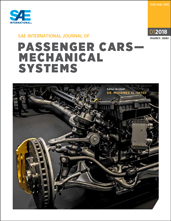Highly effective double-wall systems for automotive applications can often have over a 90 dB span in sound transmission loss values between low frequencies, where they are usually least effective and upper frequencies, where they are typically most effective. Particularly for 16-bit measurement systems, but even for 24-bit systems, this can represent a very difficult scenario for measurements in either the source and/or receiving chamber(s). A methodology to balance the observed dynamic ranges in both source and receiving chambers is presented and discussed in this paper. An improved sound transmission loss measurement system can therefore be implemented which reduces the potential of overload or noise floor contamination occurring in measurements within either chamber. Low frequency SPL requirements for the source chamber speaker system and flanking noise issues with adjacent test chambers can also be typically reduced. Although this paper focuses on the case of SAE J1400 [1] sound transmission loss testing, the methodology described could also benefit other test standards, such as ASTM E-90 [2] and ISO 10140-2 [3].
